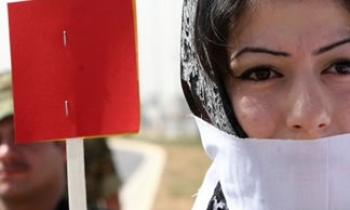Los Angeles --- It was a remarkably sad coincidence that within the span of a few days, two of the world's more influential newspaper figures died.
What is even more remarkable is that even though the two newspapers over which they famously presided could not have been more different, both were rightly considered pioneers and innovators.
From 1986 until 1993, Chen Li was editor-in-chief of China Daily. Western media ideologues would dispute whether China's largest-circulation English language daily was then or even today is a true newspaper. For, as with all the country's media institutions, the Chinese government hovers over it like an Orwellian Big Brother, even having the final say on key editorial appointments and story placements.
Be that as it may, Chen Li was a giant among his journalistic countrymen and he even had admirers in the international press corps who had great sympathy for the restrictions under which he had to operate. Under his direction, China Daily evolved from a simplistic mirror of the government and party line to a more sophisticated expositor of the Chinese perspective. Regional and weekend editions were spawned, and life-style and cultural coverage was increased. Notably -- paralleling the country's economic reforms and meteoric growth -- the paper's journalism on vital issues of business and economics grew in accuracy and complexity. The result is that today the paper's weekly "China Business" section echoes its Western counterparts in reflecting market economics and conspicuous consumption.
Chen Li and his colleagues were also responsible for a subtle but significant alteration in the sources of the paper's foreign reportage that prefigured the rise of informational globalization in China. Instead of relying solely on China's official news agency, Xinhua, for international reports, the editors would also draw on stories from Western news agencies and even leading Western newspapers, mixing and matching them with reports from its own staff correspondents and Xinhau. The quiet but telling result was a wider window on the world for its bilingual Chinese readers and its expatriate readership on the mainland.
China Daily has a long way to go before it's anything of a match for The New York Times, of course. But without Abe Rosenthal's hard-charging tenure as top media dog of The New York Times from 1977-86, the distance would have been much shorter. Abe died the other day, just a few days after Chen Li, but like Chen, he was a major newspaper innovator at just the time the newspaper genre needed it most. Before Rosenthal's daring editorship, The Times often lived-up to its uncomplimentary nickname, the then oft-invoked "old gray lady."
Like his Chinese counterpart, Rosenthal restructured The Times to upgrade its business and cultural coverage without noticeably detracting from its core franchise as America's most significant establishment paper of national and international politics.
In an age of constant challenge from the Internet, newspaper editors who are not aggressive innovators are little better, really, than funeral directors. Unless young readers start taking up the newspaper habit, readership of newspapers will inevitably age apace and die off. Working within two very different media and political cultures, both Chen Li and Abe Rosenthal rose to their respective challenges. By showing the world -- and other editors -- how it could be done, they also made the case why it must be done.
Personally, I knew (a little) and liked (a lot) both of these figures. I read -- and still read -- their newspapers every day. I get the national edition of The New York Times delivered at my doorstep in the mornings, and reach into my office mailbox at UCLA later in the day for my China Daily. For me, they are both "must-reads." In general, China Daily at its best tells you what the government more or less wants you to know and think. The New York Times, at its best, tells you more or less what the government doesn't want you to know and think. For all their great and very different faults, both newspapers in a special sense reflect the two most important countries on the face of the earth.
This column is thus a tribute to two historically important journalists who, in their own ways, dealt with very different institutional, political and cultural limitations and tried to raise the standard of what readers knew and how they knew it. As old, old newspaper writers used to say by way of high praise: Hats off to both of them!









